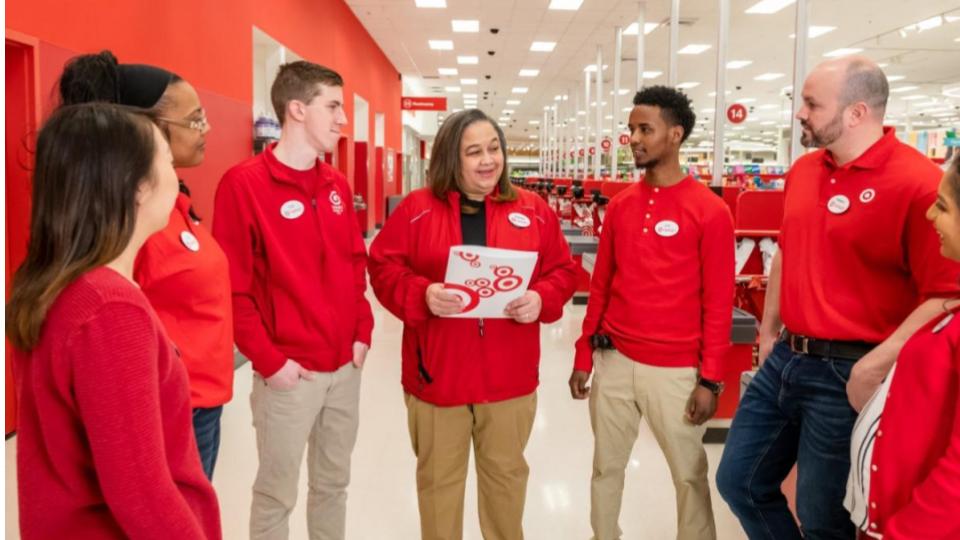“A team that isn’t growing is stagnating”
If you had a dream team, what would it look like? Would it be full of quick-start strategists or process extraordinaries? When you look around, do you see visionaries plotting next steps, or implementers organizing projects with flawless execution?
What kind of attitudes will your team members have? Will they be serious and analytical, or light-hearted and cheery? Think about the skills they would have, the positions they would play, and the attitudes that would mark their demeanor.It doesn’t have to be a dream.
Creating an atmosphere where superstars shine brightly is attainable! But you must design it. You must plan for it. It will not magically arise by happenstance. Yes, people will still be human, and they will have days when their attitudes are in the toilet and their work is all a mess.
But you can create a work life you love – if you infuse them with a desire to be more, if you set them up for success, and if you allow them to use their unique talents to their fullest potential.
Look around
Take a look at your current team. What skills do they possess? What part of your dream team is already well on its way? What personalities are present? Unless you know where you are starting from, you will never be able to cross the finish line.
So write down the types of people already on your team, and start planning to add the “missing members” that you need to make up your dream team. These “missing members” may turn out to be an outside hire, or they may already be apart of your team and you just haven’t realized their potential!
Creating this list is imperative to realizing a dream team – it will force you to look for certain characteristics in new hires, and search for greater talent inside your organization. Before you look outside your team, first analyze the dormant talents in your organization.
One of the biggest mistakes managers make is looking outside their organization for talents their employees already possess; but you must search for them.
Diamonds are never found on the surface; you must dig to uncover them. The search is worth it – harnessing potential in your current team is the easiest and cheapest way to grow your superstar team.
It’s a basic human desire
Deep down humans want to grow. They ache to work in an environment that champions their strengths, where they can contribute and make a lasting impact on the world. They need a vision. They need to know where they are going, and how you plan to get them there.
Where do YOU see them in five years? They need you to help them grow. They need your connections, your encouragement, and your leadership. They need a roadmap for success. Once they have a personal goal to work towards, you will be shocked to see what a difference it can make in their efforts at work.
Instead of fiddling around and wasting time, don’t be surprised if you see them newly energized to conquer the tasks set before them. Now they have somewhere to go!
They have places to be, and someone to reach towards – a better version of themselves. Sit down with them and ask: “How do you want to grow? If you could imagine your career path, where do you see it taking you?” Performance reviews are the perfect time for this conversation. Managers often waste performance reviews by only focusing on their faults or by giving extremely generic feedback.
Don’t fall into this trap! Performance reviews are supposed to be used to analyze how the employee did in the past, and more importantly, pave the way for where they are going in the future.
Once you figure out what the end goal is for them 3, 6, or 12 months down the road, you need to create an effective employee development plan.
Aflac does a great job with this. In a recent article in HR Tech Outlook Magazine, Matthew Owenby, Senior VP of Human Resources for Aflac, talks about how Aflac created the Career Success Center that helps employees plan career paths and then sets them on the proper track to achieve it.
The plan should provide all your employees with clear direction on how to increase their skills and how to successfully advance their careers.
Principles for Employee Development Plans
1 – Consider Your Business Goals
Take a step back. What are the company’s overall goals? What metrics do you need to hit as a manager?
Ignoring the big picture and getting caught in the weeds will be detrimental to you as a manager and the team as a whole. Instead, align your development plans to the company needs. That way, everyone wins! In other words, employee development plans should be set up so that as an employee progresses in his or her career, the company will benefit as well.
2 – Discuss Vision with Employees
Once you have figured out where you and your company are headed, ask your employees which seat they would prefer along the way.
You’ll never know where they want to fit into the company’s vision until you ask them. Figure out what their dreams are before you start them on a career path they are not interested in. Keep in mind; it’s easier to paddle a canoe downstream than to fight an uphill battle.
3 – Determine their Current Skill Level
Take a look at the person in front of you. What skills do they have already?
Determining their current skill level is the key to creating an attainable development plan. For example, if you want them to take over ordering needed supplies, how much will you need to teach them before they will be able to do the job correctly? How long do you think it will take?
Starting a development plan with a path in mind will make it much smoother for the company, the employee, and your nerves. The last thing you want to do is hand off a project to someone who needs far more training than is possible to complete the job well.
4 – Create an Action Plan
Once you have decided on the type of skills you would like to see them grow in, identify up to 10 on-the-job development opportunities they can take advantage of to enhance their skills.
While 10 may seem like a lot, remember that you are developing a career path. Ideally, you want them to have goals for the month, the quarter, and the year. By coming up with 10, you’ll save time each performance review meeting – instead of coming up with new development ideas, you can be monitoring their progress, celebrating their successes, and moving them onto the next action item on the list.
5 – Get Your Employees to Commit
Managers often forget this one to their detriment.
You need employee buy-in before you begin. If you haven’t properly communicated the plan before it begins, you may experience a negative pushback that surprises you. After all, it is for their benefit. A confused mind never buys, whether it’s an idea, a product, or a commitment to a development plan.
Talk with them about the plan, why you think it’s important for their success, and then ASK FOR THEIR FEEDBACK AND COMMITMENT.
Before the performance review is over, make sure they understand and agree with the direction you are laying out for them. The capability, courage, and confidence to do the task well will only come from their commitment to succeed.
6 – Finalize a Formal Development Plan
Write the development plan down. While it’s easy to think you’ll remember, the chances are highly unlikely.
Better to write down all the action items, deadlines for completion, and any lessons learned along the way in a formal document. It’s also imperative to keep track of their progress so you’ll have something to review each time you sit down for a performance evaluation.
That way, you can remind employees of their commitment, celebrate the accomplishments they have achieved that quarter, and encourage them to continue onto the next one. Having a formal plan will also be a good thing for you to pull out from time to time and review. Ask yourself, “How is the team progressing along? What can I do to help them reach their goals faster and more proficiently?”
7 – Apply the New Skills
Figure out a way for employees to use their new skills as quickly as possible.
Otherwise, what is the point of having them learn it? On-the-job training is the best way to keep the skill in long-term memory, and to motivate employees to keep on learning. If they never use their new skills, they will consider all their efforts a waste and lose motivation to continue growing.
Also, without practice, your employees will lose the new skills they’ve gained. If you can’t find an application for the skills your employees are learning, it may be time to go back to the drawing board and assess their development plans.
8 – Include Milestone Review Dates to Assess Progress and Performance Outcomes
Set milestones along the way for them to achieve.
Instead of giving all 10 goals at once, give two or three with dates for completion. People need deadlines to achieve. It’s the same reason professors give syllabi at the beginning of the semester with due dates – humans don’t respond well to ambiguous finish lines.
Once you have the dates in place, monitor their progress. Review how things are going along the way to make sure you are both on the same page. Encourage feedback and honest assessments of their progress. As they grow, so will you.
Celebrate every victory
Finally, celebrate each step of the way, not just the end result.
It’s easy to forget that achievements, even little ones, are unique opportunities to appreciate work well done and provide motivation for the future. So often managers get frustrated with all the things their employees do wrong, they forget to celebrate all the things they do right!
Change won’t happen overnight. It will take a coach’s attitude, one filled with patience, encouragement, and wisdom. But over time, your employees can become a dream team.
Their change starts with you. Supporting the growth and development of your staff is vitally important – helping them become as productive and successful as possible in their current role, encouraging motivation and retention, and setting them up for career opportunities.
So develop that plan, gain their mutual commitment, and watch your employees become your dream team!
For more great leadership tips, check out…
Becoming a Great Leader – Part 3: Attitude
When you care about what you’re doing, your employees will care about what they’re doing….
Put the LEADER in ETL
Tips for Leadership Success: 12 Point To Do List to Become a Top 10% Manager (updated 12/8/23)
Check out more posts from the
MyEmployees Learning Center
Recognition ABC’s
Peep these recognition tips and tricks and get rolling with employee recognition. Read more here.
Leadership Training
Become a top 10% manager in your industry and get the promotion you’ve always dreamed of with some of the tips and training you’ll find HERE.
Customer Stories
Get inspired by some of our most successful customers HERE.
Our Culture
Yes, we’re unique. Learn all about the fun and adventures that make us who we are HERE.




